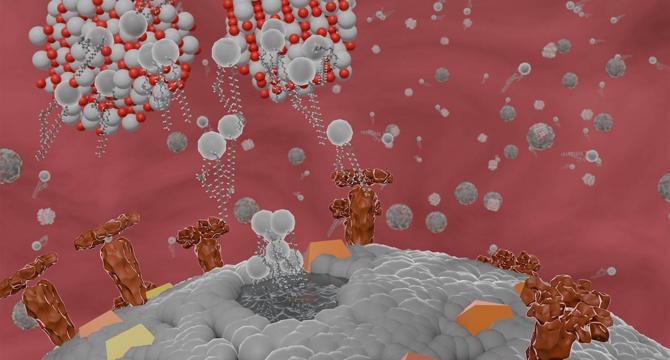Physicsworld
1M
127

Image Credit: Physicsworld
Nanoparticles demonstrate new and unexpected mechanism of coronavirus disinfection
- Researchers from Sweden and Estonia have investigated the effect of nanoparticles on viruses with the aim of developing new disinfection methods that could be used to fight future viral outbreaks.
- They discovered that titania nanoparticles show significant antiviral activity against the SARS-CoV-2 virus that causes Covid-19 and other viruses, and elucidated the nanoparticles’ antiviral mechanism.
- Previous evidence suggested the nanoparticles would only require very low concentrations because they interact strongly with proteins in the dark but the team found that only millimolar concentrations were effective.
- The antiviral effect on the enveloped virus is not due to the blocking of surface proteins in low concentrations and is not oxidative in darkness.
- Instead, researchers believe the antiviral effect is due to direct complexation of nanoparticles with membrane phospholipids, not previously considered.
- The nanoparticles are non-toxic and work at room temperature without requiring UV illumination, making them simple and low-cost disinfection tools to coat surfaces to destroy enveloped viruses or decontaminate air and water.
- The finding is deemed evidence of a new pathway for metal oxide nanoparticles antiviral action.
- Other oxide nanoparticles with an affinity to phosphate, including iron and aluminium oxides, have been identified as possible effective disinfection tools.
- The research team findings have been published by Nanoscale.
- The study could have important implications for SARS-CoV-2 disinfection strategies in the future and could help develop antiviral surfaces and other materials which could be a key element in the fight against viral and other outbreaks.
Read Full Article
7 Likes
For uninterrupted reading, download the app